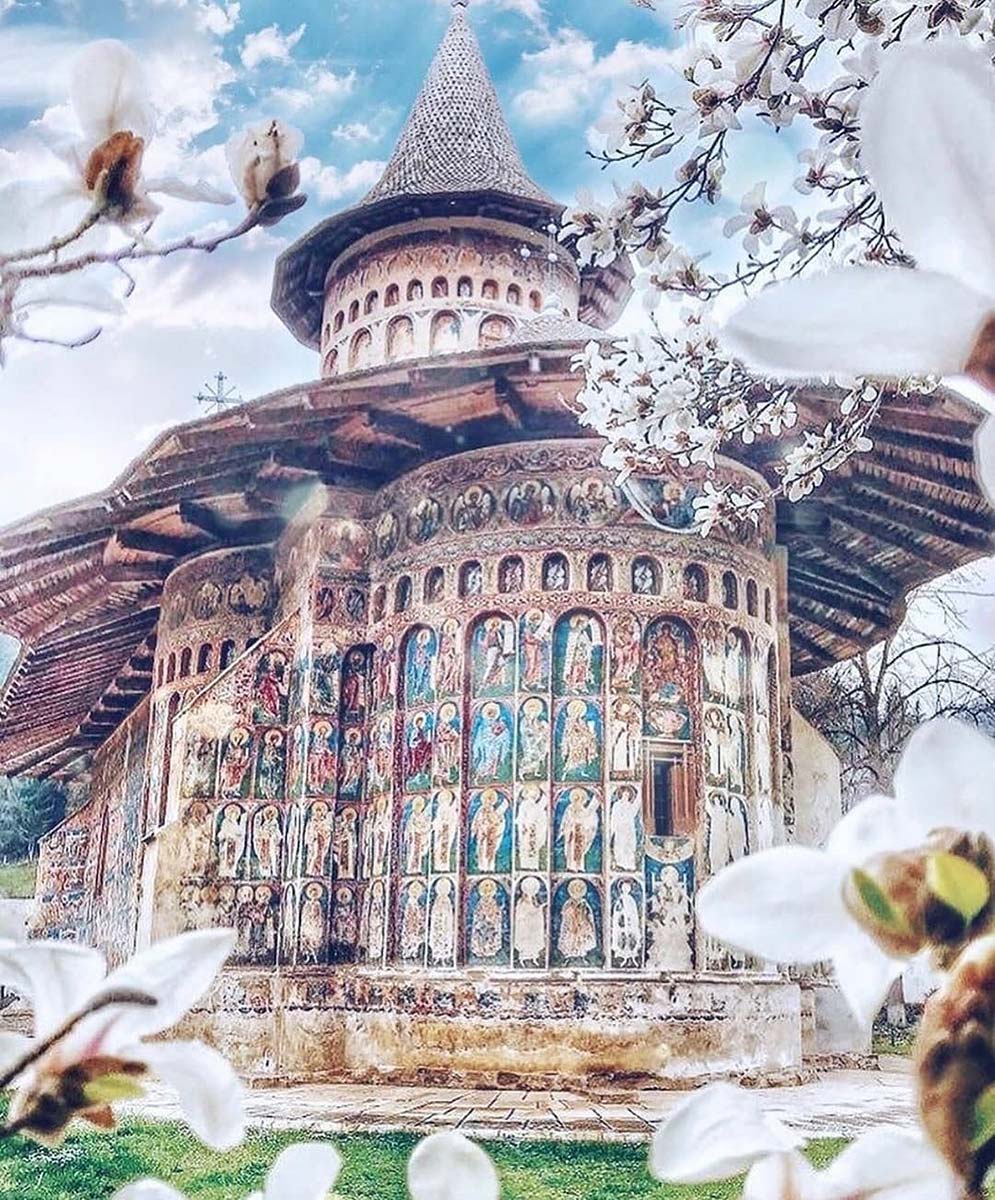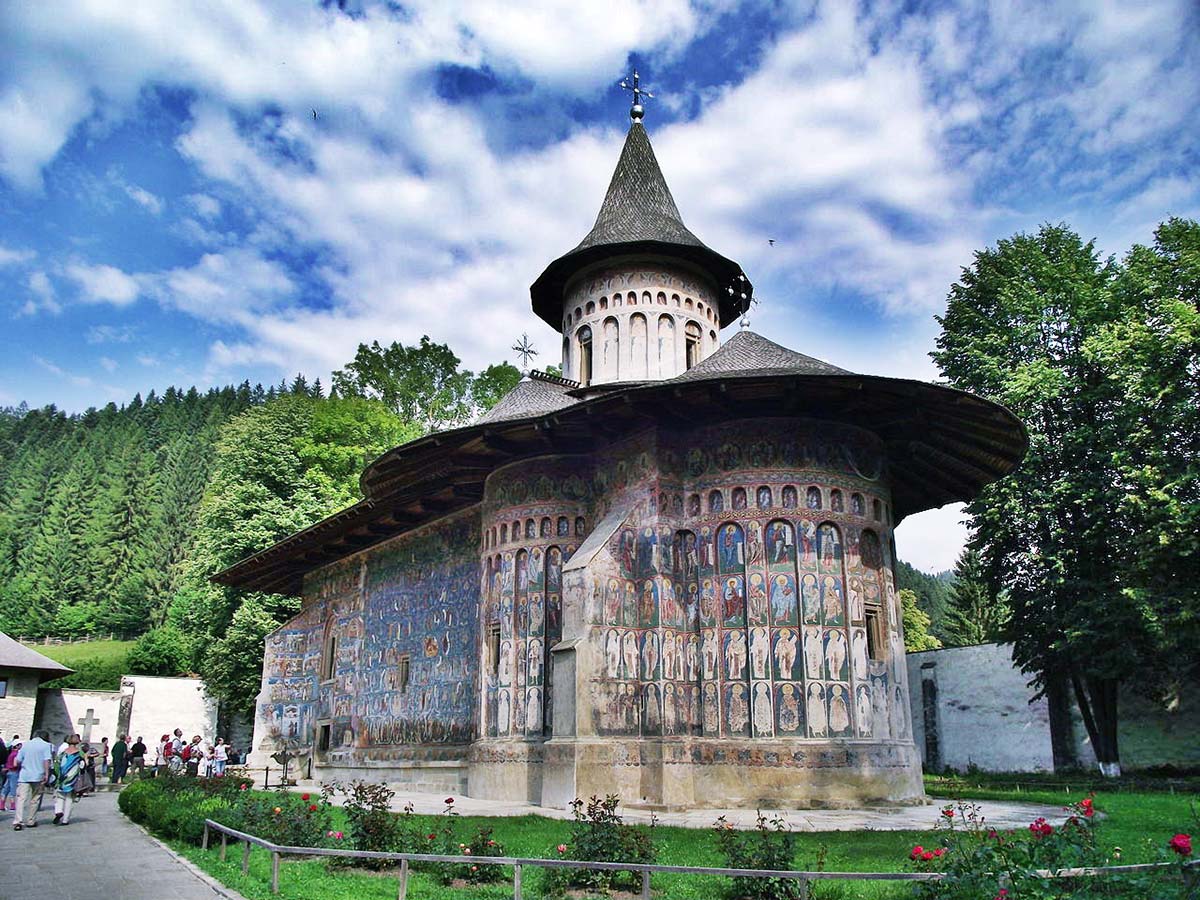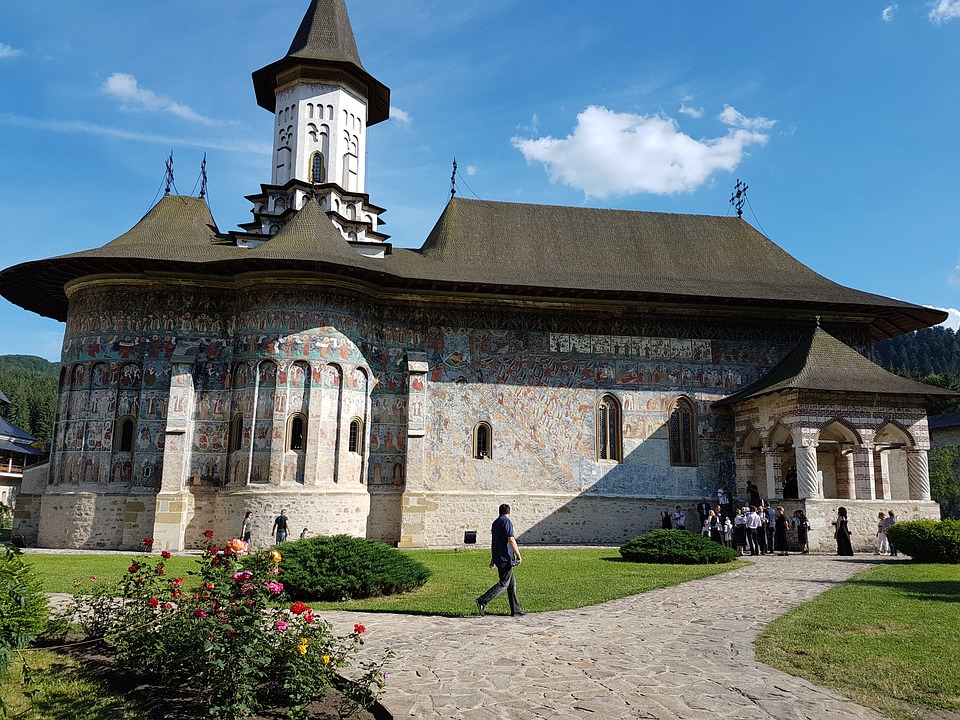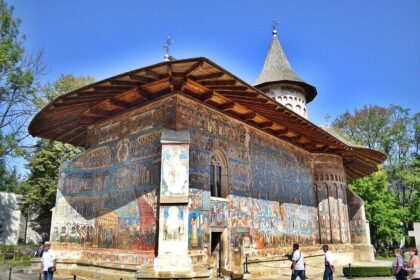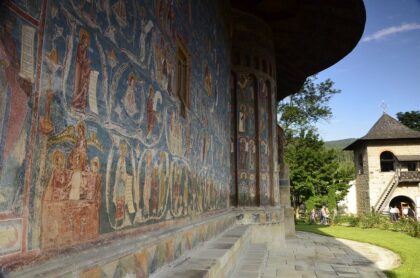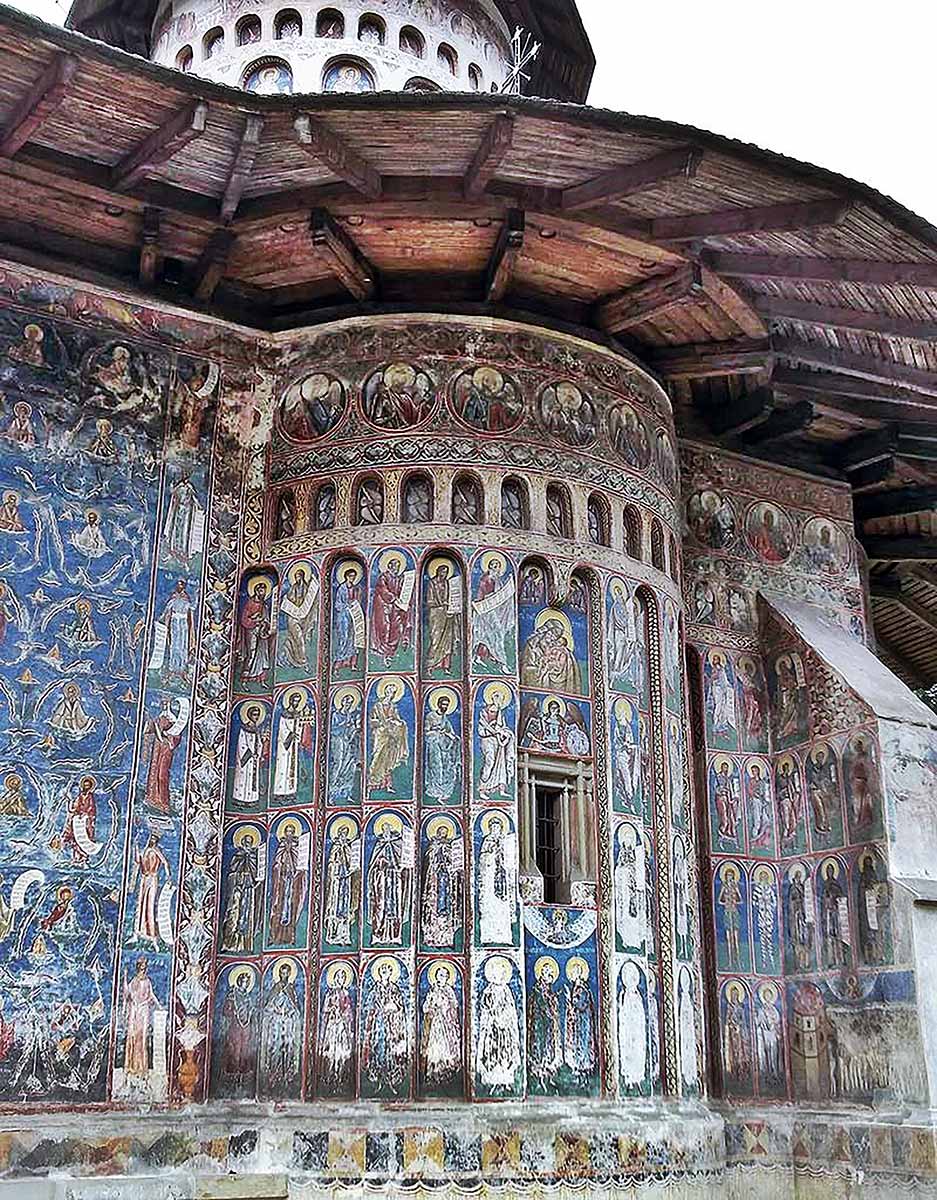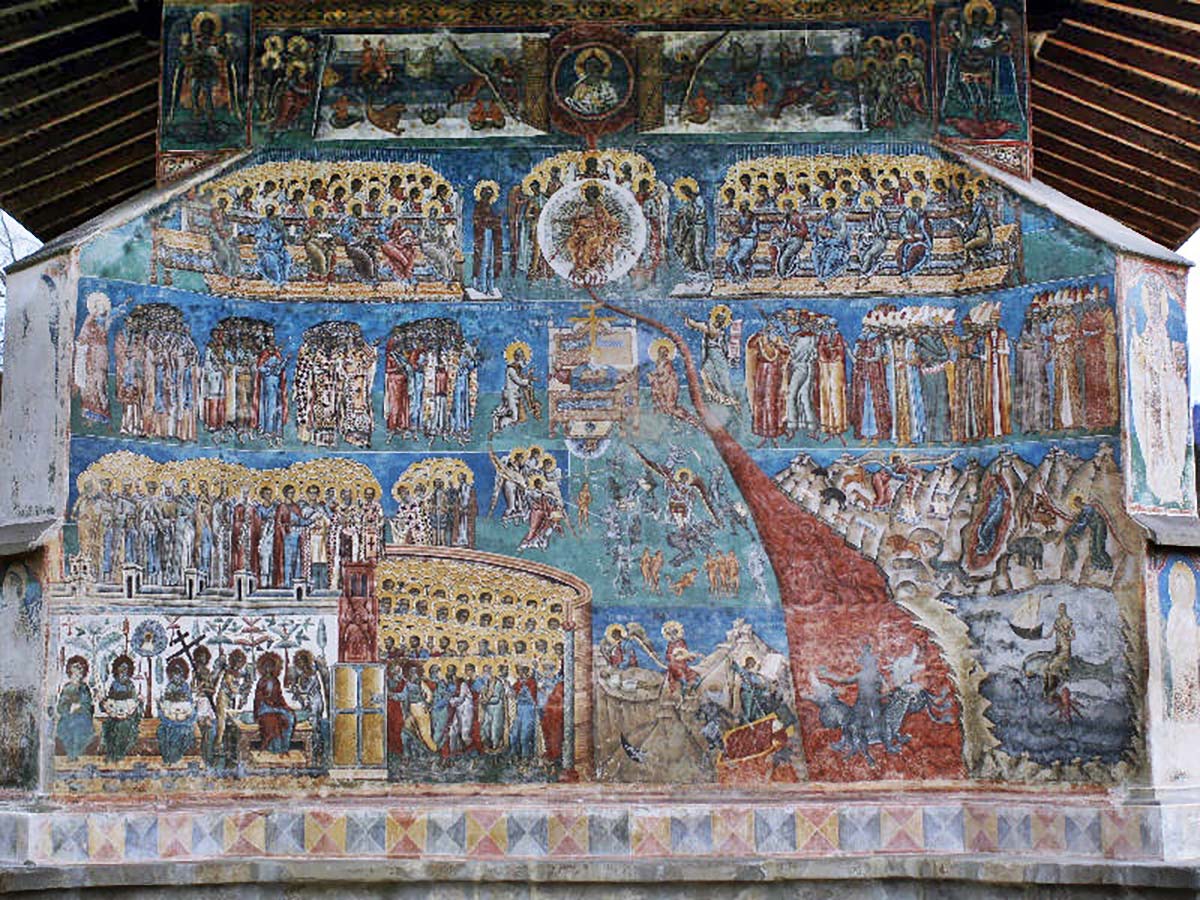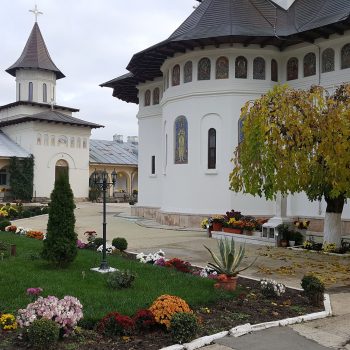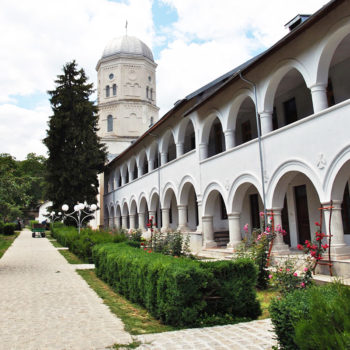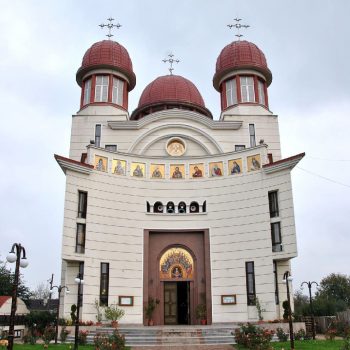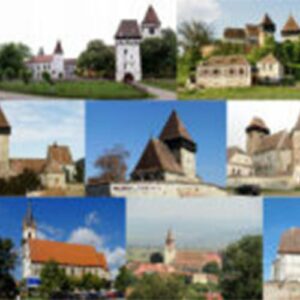Brief description: The Voronet Monastery is located at the foot of the Carpathians in the center of a village and is considered by some specialists as a true “Sistine Chapel of the East.” It is a simple church but with frescoed exterior walls. The monastery looks like an illuminated Evangelist wide open. In the middle of a harmonious nature, on the sober green background of the forest. The building has been erected for more than 500 years by inspired hands expressing faith through color and stone.
More details – History Architecture Present
The monastery is built in honor of voivode Ștefan the Great and Saint, built in 1488 in just three months and three weeks (from May 26 to September 14). It is known that the Moldavian voivode renovated and built many monasteries and churches, but the story of Voronet brings him together with Stephen the Great and Reverend Father Daniil, a well-known priest and hermit, he created a hesychast movement for his time. In a small dug cell in stone, he nurtured the land of Moldova, for 20 years in Voronet. The legend of the Voronet Monastery unites the two great personalities.
Architecture
The architecture of the Voronet Monastery is representative of the Moldavian style, being an original and specific synthesis of features of Byzantine origin (altar, naos and pronaos) with elements belonging to late Gothic (the height of the church, the external buttresses, the treatment of the carved stone). The interior painting is inspired by more archaic and austere models of Byzantine iconography, it impresses with the clarity and rigor of the iconographic development, with the vigorous drawing, the chromatic range and the expressiveness of the characters.
Present
The Voronet Monastery was abolished in 1785 by the Austrian occupiers.
In 1991, after 206 years, the Holy Synod of the Romanian Orthodox Church decided “the re-establishment of the Voronet Monastery, as a nunnery.
In 1993, it was included in the UNESCO World Cultural Heritage.







